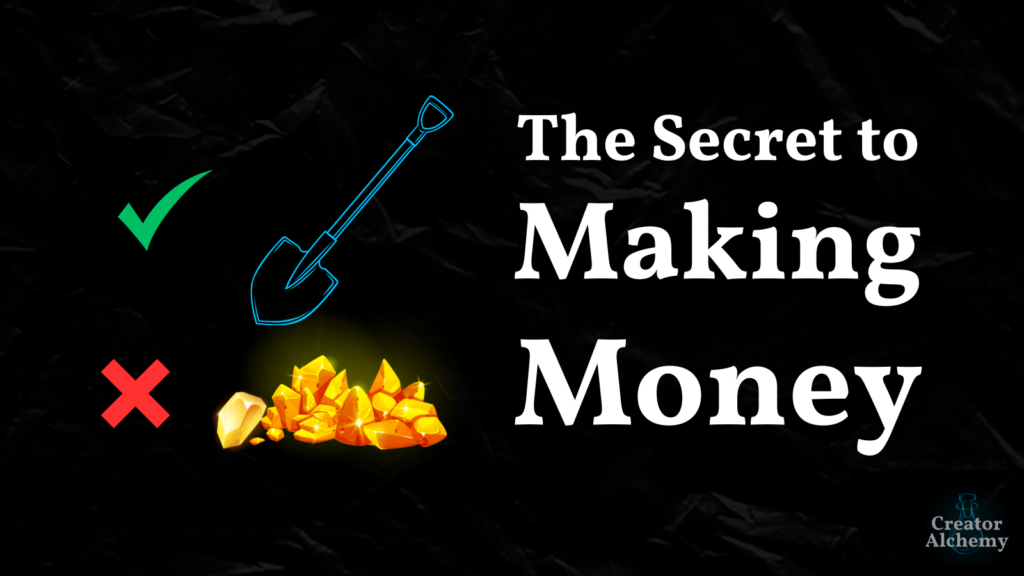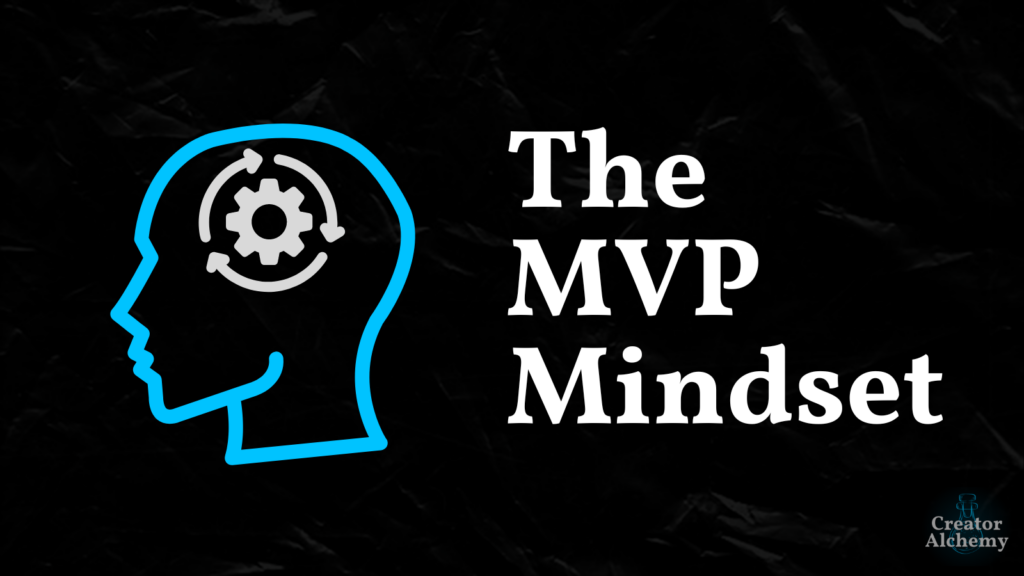So far in his career, he’s been early at four startups: Udemy, Lyft, Sprig, and Maven. Three of them achieved over $1M in run-rate in their first six months of going live.
In a recent article, he outlined his philosophy on why creating an MVP is ill-advised for many entrepreneurs and detailed a better solution: the Minimum Viable Test.
“There are a lot of definitions of MVPs out there, but I’ll suggest one: An MVP is a basic early version of a product that looks and feels like a simplified version of the eventual vision. An MVT, on the other hand, does not attempt to look like the eventual product. It’s rather a specific test of an assumption that must be true for the business to succeed.”
I love this idea.
Here’s how I’ll be using his MVT Process to build a CBC to help entrepreneurs do meaningful, purpose-driven work that fulfills them using evidence-based psychology.
•••
The Problem
We all want fulfillment—to do meaningful, purpose-driven work that deeply satisfies us.
But a lot gets in our way.
Most of us don’t have a clear picture of what a fulfilling life looks like, we chase the wrong things for 40+ years then realize how much time we wasted, or we let fear stop us from doing meaningful, purpose-driven work.
Life’s too short to do uninspiring and unfulfilling work.
I’ve spent the last 15 years studying psychology and helping people avoid spending their entire lives doing unfulfilling, uninspiring work.
So I’m creating a cohort-based course to teach others the same strategies my 1:1 clients have used to achieve incredible results.
And I’m using Gagan Biyani’s MVT framework to make sure it delivers the best results possible.
Let’s start with Biyani’s case against building an MVP and how I plan to avoid these mistakes:
•••
Mistake #1: Brainstorming Instead of Focusing on One Core Insight
Facebook isn’t successful because it allows people to build groups, host events, or post photos of their dogs.
They focus on one insight: People want to connect with their friends and family online.
“If you build an MVP, you start to think about the 20 features you might build to make people happy in a market, which takes your eye off the one specific insight that the customer actually cares about. Purity breeds success.”
Early on, I focused too much on the possibilities and overcomplicated what transformation I wanted to provide.
What is the core insight I’ll focus on?
People want to do meaningful, purpose-driven work and spend their time on what matters most to them.
•••
Mistake #2: Overweighting What Customers Say They Want
“People will say they want a “faster horse,” when they actually want a car. So relying on what customers tell you to build leads to you making incremental improvements instead of delivering a novel breakthrough.”
My approach will be to dig deep into common themes my 1:1 clients run into.
Then build this out into a course module instead of only crowdsourcing content ideas from everyone.
•••
Mistake #3: Getting Caught Up Building Instead of Providing Value
Biyani has a rule:
“No company swag until the business has at least $250K of revenue or 250k users. You are nothing until you have customers who want your product.”
When I started coaching, I wasted money on logo designs and media kits I never used because I iterated beyond them. I would’ve known that had I focused on delivering value before building out a “brand” just for the sake of feeling “official.”
So for the beta cohort of this CBC, I’m avoiding all the fluff and hyper-focusing on maximizing value.
It won’t be pretty.
But it’ll be awesome.
•••
Mistake #4: Most MVPs Are Overbuilt
“You only want to build [a full MVP] after you’ve proven that you have something you can sell, aka after you have succeeded with a minimum viable test.”
Before I build out my CBC, I’m collecting data to see if people are interested and what specifically they’re interested in gaining from it.
Then I’ll build based on validation instead of pre-optimizing and investing tons of hours building something people won’t want in the end.
If you’re interesting, check out the website here.
So now we know what NOT to do, the next part of the MVT Framework is a 3-step process to build the best product out there.
•••
Step #1: Find Your Value Prop
Focus on one that speaks to their actions:
- What are they already trying to do?
- How can you help them achieve their goals better than they know they can?
I’m still refining my value prop (and I’d love your feedback) and I’m far from an expert copywriter.
But so far, it’s this: Clarity on what matters most and a system to build your life and business in alignment with it.
Here’s how I’m answering the two questions:
“What are they already trying to do?”
- Spend their time and energy doing work that energizes and inspires them. But they lack clarity and systems to make it a reality.
“How can you help them achieve their goals better than they know they can?”
- As a psychologist and coach, I’ve got tons of experience helping people develop the systems to optimize their mindsets and habits to reach their goals. This course will give them that system.
With the value prop sem-figured out, time to move onto Step #2.
•••
Step #2: List Risky Assumptions
In this step, you list the riskiest assumptions that might lead your business to succeed or fail. Then you test each assumption through MVTs.
Risky Assumption #1: People actually want this.
I know entrepreneurs are willing to pay top dollar for 1:1 executive coaching using my framework. But the RA is that they’ll pay for a CBC version of it.
To de-risk this RA, I’ll launch a small beta cohort and customize the course around their needs to make sure my 1:1 framework works in a larger group format.
Risky Assumption #2: I can execute it.
“Lots of great ideas die because they simply don’t work in reality.”
I’ve run groups before, and I’ve spent the last year taking some of the best CBCs out there.
I’ll de-risk this RA by using a platform I’m familiar with (Circle, Slack, etc.) and keep it to as few moving parts as possible.
Risky Assumption #3: I can market it.
This is the biggest RA for me.
CBCs are becoming a dime-a-dozen, and everyone claims they can help you achieve miraculous results.
How will I stand out when I’m not a master marketer?
My plan is to design what Seth Godin calls a “remarkable” course.
When something is remarkable, it means it’s worth remarking upon. Aka, built-in virality.
Hear me out…
You’ve heard of David Perell’s Write of Passage.
Or Tiago Forte’s Building a Second Brain.
Or Ali Abdaal’s Part-Time YouTuber Academy.
They’re worth remarking upon because they’re phenomenal courses that naturally provoke word-of-mouth via great frameworks, results, and community.
So I’ll focus on building a course with, you guessed it:
- Great frameworks
- Great results
- Great community
I’ll also look into an affiliate program for passionate alumni who want to get paid for (honestly) recommending it.
I’m all for creating win-win situations.
Risky Assumption #4: The market size is big enough.
Even Biyani says this is hard to guess at. But having a ballpark figure for validation is key.
I’m derisking this RA by keeping the beta small. If a dozen people sign up, that’s a great starting point.
Risky Assumption 5: It’ll be profitable.
Pricing is weird.
Charge too little = more affordable, but a different caliber of students and different level of engagement.
Charge too much = few can afford it, harder to get students, so less impact on the world (potentially).
Biyani says:
“Force yourself to figure out what price consumers are willing to pay relative to the cost it is for you to deliver your solution.”
I’ll derisk this RA in two ways:
- The beta will be way less than the launch price.
- The polished version launch price will be way less than I charge for 1:1 coaching.
So the CBC will always be less than the price I know people are willing to pay for 1:1 coaching.
Now that all the Risky Assumptions are de-risked, time to move on to Step #3.
•••
Step #3: Test the Atomic Unit
“Determine whether your idea actually works. Focus only on the ‘atomic unit’ of what you plan to sell.”
Here are a few examples he gives:
- Google: a search query
- Amazon: ordering a book online
- Coinbase: an easier way to buy and sell crypto
My CBC revolves around identifying your core value (just one) and developing a system to build your life and business around it.
There’s a whole system around:
- Creating goals aligned with your core value
- Anticipating obstacles
- Leveraging strengths & resources to overcome obstacles
- Developing a step-by-step plan to achieve success
But everything hinges on clarifying your core value.
So the atomic unit for the CBC is:
Are people interested in clarifying their core value, then building their life and business around it?
Biyani says,
“Consumers rarely ever buy the value proposition of a company, they buy a specific item that you are selling.”
So I’m testing this atomic unit by offering a micro-course:
The Core Value Clarification Toolkit.
If people pick up the micro-course and enjoy it, it validates the central idea for the CBC.
If not, well…everything is data.
•••
Wrapping Up
If you’re interested in joining the beta cohort and want to help influence its creation, check out the course page.



